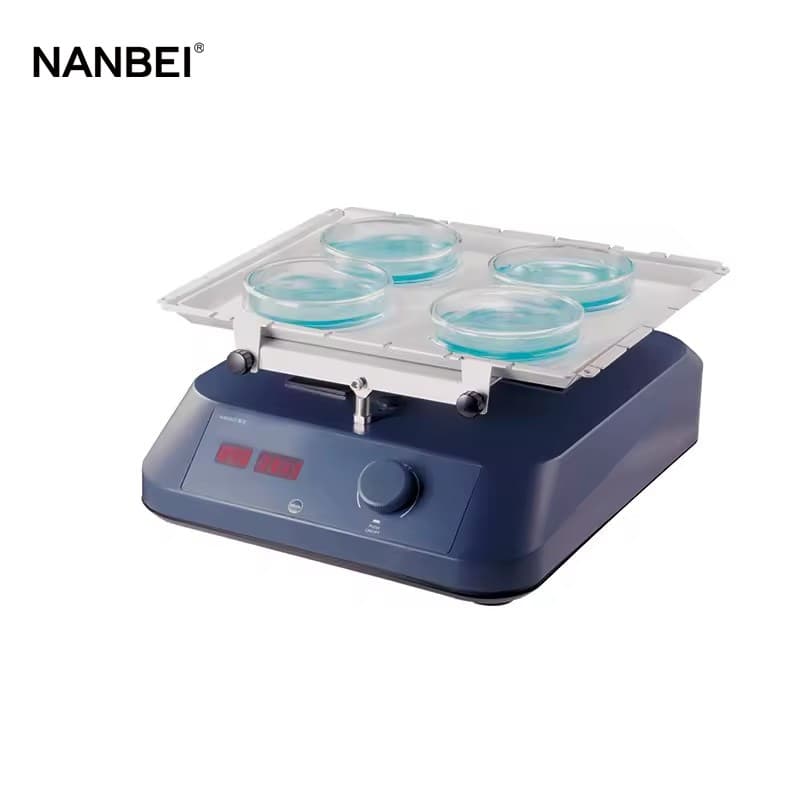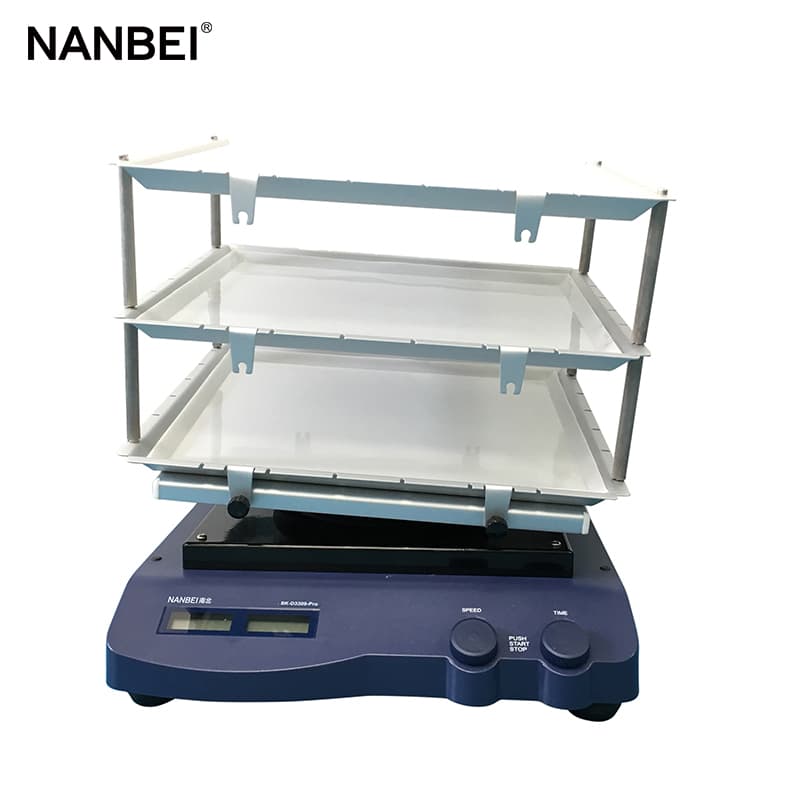-
 +8615890068607
+8615890068607
-
 +8615890068607
+8615890068607
-
 bella@nanbei-china.com
bella@nanbei-china.com
 Mobile:+86 15890068607
Mobile:+86 15890068607
The laboratory shaker can perform gyratory or reciprocating oscillation, mixing and culture of experimental samples, and is widely used in biotechnology, microbiology and medical analysis, colloid coloring or decolorization and combinatorial chemistry.

Selection of shaker:
1. Maximum load
Shakers usually have a maximum load. If the sample exceeds the maximum load (including the clamp), the shaker is easily damaged. Therefore, when purchasing a shaker, the weight of the experimental sample should be considered first.
2. Amplitude
Choose a shaker with a suitable amplitude according to the size of the culture bottle. Large culture bottles use large amplitudes, and small culture bottles use small amplitudes. Generally, a 20mm amplitude can be used as a "universal" amplitude (suitable for culture bottles of 25ml~2L).
3. Oscillation mode
Shakers have many oscillation modes, such as circular shakers, orbital shakers, seesaw shakers, and three-dimensional shakers. Choose a shaker with a suitable oscillation mode according to your needs.
4. Equipped clamps
There are also many clamps for shakers, such as beaker clamp, spring clamp, test tube clamp, ELISA plate clamp, etc. If you have special needs, you need to pay attention when purchasing a shaker.

5. Motor
The main function of the motor is to generate driving torque. The shaker with a brushless DC motor has less friction during operation, lower noise, longer service life and greater durability. The shaker with a DC motor starts faster, brakes in time, and can smoothly adjust the speed over a wide range.
Previous: No Information